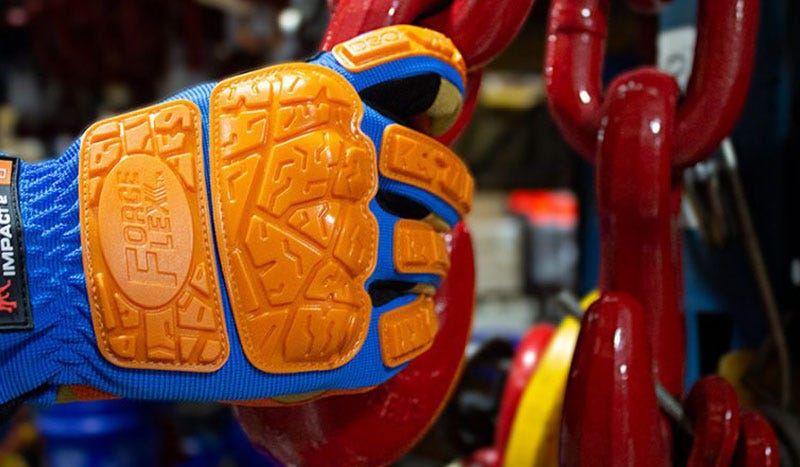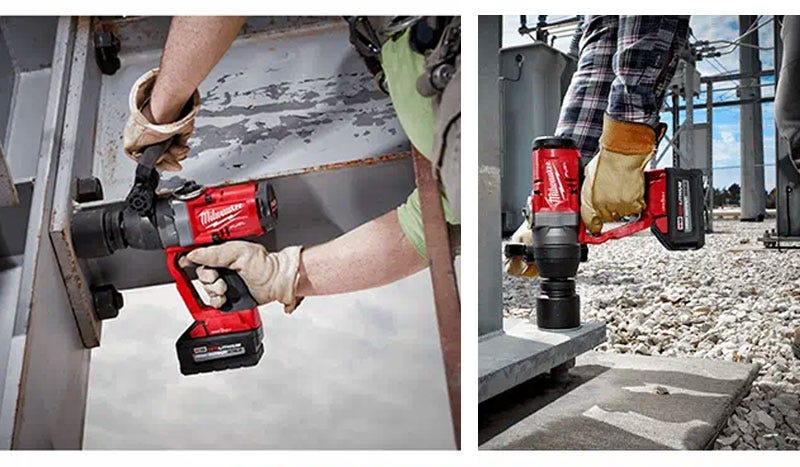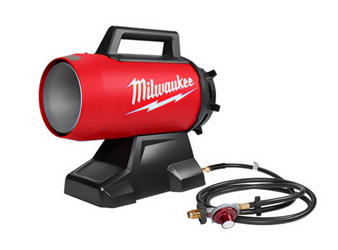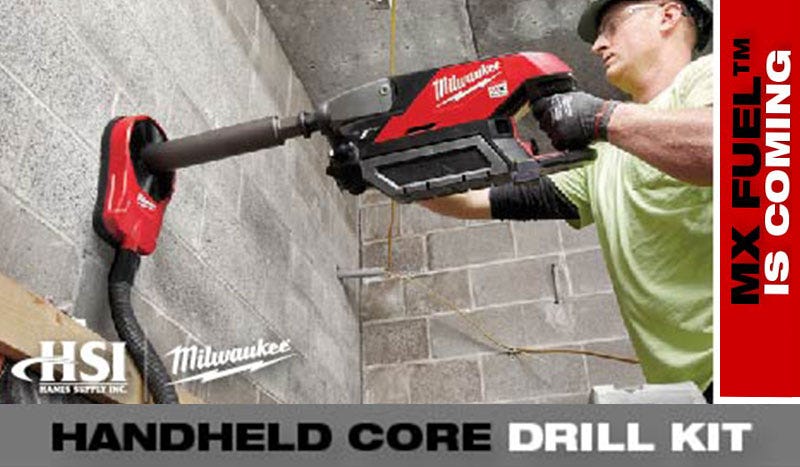Ladder Safety Month: A Comprehensive Guide to Ladder Safety
- By Hanes Supply
- Mar 13, 2019
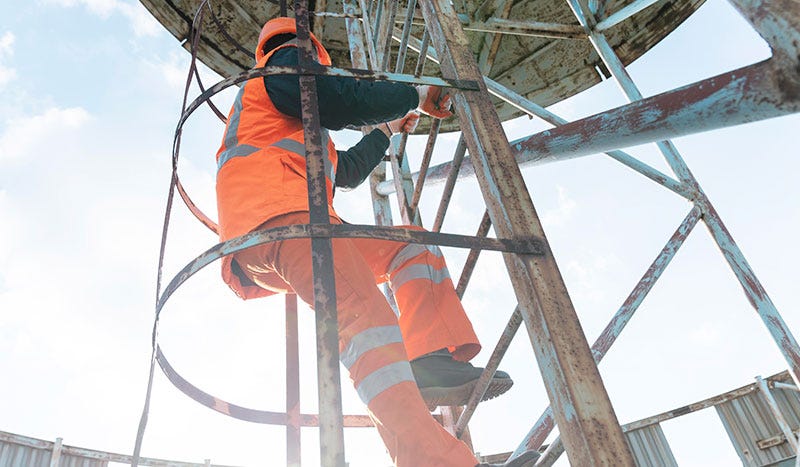
More than 100 people die from ladder-related accidents every year, and thousands more suffer disabling injuries. Using a ladder isn’t inherently dangerous – when ladders are in working condition, set up correctly, and used by a person with proper training, they're a safe and essential part of any construction site or home toolbox. So why do so many ladder related injuries and fatalities continue to occur?
Falls are the leading cause of death in the construction industry, with over a third of fatalities coming from ladder falls. Ladder related violations have become a yearly staple on OSHA’s Top 10 Most Frequently Standards list (coming in at #6 in 2018).
Some of the most common causes of ladder accidents cited by OSHA include carrying tools while trying to climb; standing on the top rungs of the ladder; and choosing the wrong ladder for the job at hand. OSHA believes that ladder accidents are preventable with proper training, and wants to reduce the number of ladder safety violations cited each year.
These are the goals behind March’s National Ladder Safety Month, created by the American Ladder Institute in 2016. The annual movement is dedicated to bringing public awareness to ladder safety issues, and decreasing the number of ladder related injuries and deaths through free ladder safety trainings.

Most ladder falls can be prevented with simple safety checks and steps. Following these 10 steps is a good way to reduce your risk of ladder falls.
If you’re using a straight ladder, make sure it’s long enough to extend three feet past the contacting ledge. Never try to use an A-frame ladder against a wall, unless you are using a 2-in-1 solution ladder like the Louisville Cross-Step, which locks securely to transform from an A-frame to a straight ladder. For heights up to 60 feet, use an extension ladder.
Any ladders that are removed from service must be clearly labeled and destroyed beyond possible use so that nobody else has a chance to injure themselves. Dispose of out of service ladders as soon as possible.
Before each use, make sure of the following:
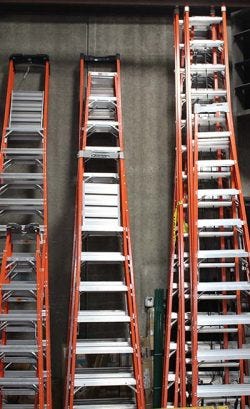
Rest ladders against support racks to keep them from falling or leaning while in storage. If ladders are hung from supports, make sure there are sufficient support points to avoid sagging and warping of the ladder.
During transportation, be sure to secure your ladder to avoid damage from bumps and vibrations. Inspect ladders for damage before and after each use and after transportation, and make sure they are clean of dirt and debris.
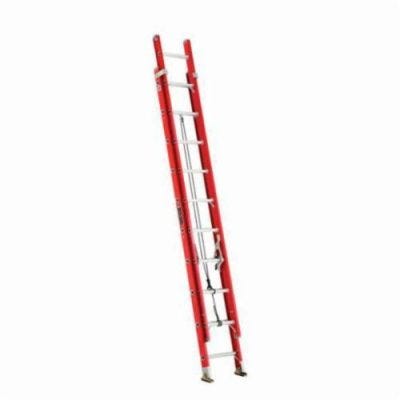
Louisville® Multi-Section Extension Ladder
Falls are the leading cause of death in the construction industry, with over a third of fatalities coming from ladder falls. Ladder related violations have become a yearly staple on OSHA’s Top 10 Most Frequently Standards list (coming in at #6 in 2018).
Some of the most common causes of ladder accidents cited by OSHA include carrying tools while trying to climb; standing on the top rungs of the ladder; and choosing the wrong ladder for the job at hand. OSHA believes that ladder accidents are preventable with proper training, and wants to reduce the number of ladder safety violations cited each year.
These are the goals behind March’s National Ladder Safety Month, created by the American Ladder Institute in 2016. The annual movement is dedicated to bringing public awareness to ladder safety issues, and decreasing the number of ladder related injuries and deaths through free ladder safety trainings.

10 Steps for Safe Ladder Use
Most ladder falls can be prevented with simple safety checks and steps. Following these 10 steps is a good way to reduce your risk of ladder falls.
1. Make sure the ladder can support your weight plus the load you are carrying
Check the ladder’s maximum load rating (found on the label of every ladder) to make sure it can withstand the weight of your body, clothing, and protective gear, plus anything you’re carrying. Never exceed the rated load.2. Place straight ladders against the wall at a 75° angle
Straight ladders must be placed at a safe angle to stay on secure footing during use. There’s an easy trick for this: for every 4 feet the ladder goes up, move it 1 foot away from the wall.3. Select a safe ladder for the job
One of the most common causes of ladder injuries is using a ladder that’s unsafe for the task at hand. While it’s convenient to use whatever ladder is most readily available, not every ladder is safe for every task. For example, never use a metal ladder for electrical work or near power lines or other electrical hazards.If you’re using a straight ladder, make sure it’s long enough to extend three feet past the contacting ledge. Never try to use an A-frame ladder against a wall, unless you are using a 2-in-1 solution ladder like the Louisville Cross-Step, which locks securely to transform from an A-frame to a straight ladder. For heights up to 60 feet, use an extension ladder.
4. Never stand on the top two rungs of the ladder
You can feel how unbalanced your body is on the top rungs of a ladder, where there’s no place to support your legs or to grab if you start to fall. If you need to reach higher than the third rung from top will allow, get a taller ladder or find a safer solution. Platform ladders, for example, provide a large, stable top step with a railing on three sides for a more secure work area.5. Center your body over the ladder and avoid leaning or reaching
Overreaching is another leading cause of ladder injuries and fatalities, and it’s one of the easiest to prevent. Keep your body between the rungs of the ladder, and if an area is out of comfortable reach, climb down and move the ladder. It may take a minute longer than trying to reach or shift the ladder without descending, but your life is well worth the time.6. Make sure the ladder extends 3 feet above the ledge or roof
To be sufficiently secure for climbing, a straight ladder must extend at least 3 feet past the ledge it is contacting.7. Place the ladder on a stable surface
Always set up the ladder on a firm, flat surface and ensure that both safety feet are securely in place. Clear the area of debris and hazards, and don’t place ladders on muddy or slippery surfaces. If the ladder is blocking a doorway, make sure the door is locked and signage is in place so the door isn’t opened while the ladder is set up.8. Make sure the ladder is properly set up before each use
Ensure the ladder is fully open and spreaders are completely expanded. Check that all feet are stable and secure on the ground. When using an extension ladder, always set up the ladder before expanding it.9. Clean the ladder and your shoes before climbing
Mud, oil, grease, water, and other debris can cause a slip or fall from an otherwise safe ladder setup.10. Use a tool belt to carry tools
50% of ladder accidents involve trying to climb while holding tools. Use a tool belt or a harness with tool attachment points to keep both of your hands free for climbing.The Three Point Rule
The most important rule for safe ladder use is to keep three points of contact on the ladder at all times. When you’re climbing, keep both hands on the ladder. While working, keep both feet and one hand on the ladder.Ladder Inspection
Inspecting your ladder before each use is the easiest way to prevent accidents before they have a chance to happen. If any part of the ladder is missing, damaged, or unsafe in any way, the ladder must be immediately removed from service.Any ladders that are removed from service must be clearly labeled and destroyed beyond possible use so that nobody else has a chance to injure themselves. Dispose of out of service ladders as soon as possible.
Before each use, make sure of the following:
- • The label is clearly legible and the working load limit is known
- • All rungs and steps are intact and in good condition, and step wear treads are intact
- • Steps are free of grease, oil, mud, and other debris
- • All braces, rivets, bolts, and screws are in place and secure
- • There are no sharp edges or splinters for clothing or skin to catch on
- • Ropes on extension ladders are in good condition, with no visible fraying or wear
- • Spreaders and other locking mechanisms lock securely
- • Safety feet are intact and in good condition

Ladder Care and Storage
Properly storing ladders can help keep them in safe condition for each use. Store ladders in a dry, cool place, avoiding exposure to heat and moisture. Exposure to heat from sunlight or fire can de-rate the ladder or make it unserviceable, depending on the level of damage. Ladders exposed to acids or alkalis should be removed from service.Rest ladders against support racks to keep them from falling or leaning while in storage. If ladders are hung from supports, make sure there are sufficient support points to avoid sagging and warping of the ladder.
During transportation, be sure to secure your ladder to avoid damage from bumps and vibrations. Inspect ladders for damage before and after each use and after transportation, and make sure they are clean of dirt and debris.
What can you do for Ladder Safety Month?
This March, construction industry workplaces all over the country will be recognizing Ladder Safety Month by promoting safety awareness and by providing ladder safety training to employees.Here are some ways you can create your own ladder safety month event to make your worksite safer:
- • Host an in-person ladder safety training event in your workplace. Give workers an incentive to show up and provide a value for the training – free food always goes a long way.
- • Post a ladder safety poster in your workplace to quickly educate workers on safe ladder use
- • Post about #laddersafetymonth on social media
- • Include information about Ladder Safety Month in your employee/customer newsletters and emails
- • Perform ladder inspections and replace unserviceable ladders
- • Encourage employees to take the free online training courses on ALI’s website
< Back to Articles

Louisville® Multi-Section Extension Ladder





































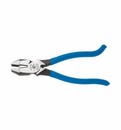 Klein® D2000-9ST 2000 Heavy Duty Rebar Work Cutting Plier, 9-3/8 in OAL
Klein® D2000-9ST 2000 Heavy Duty Rebar Work Cutting Plier, 9-3/8 in OAL
 Stanley® FatMax® 33-716 Reinforced Tape Rule with BladeArmor®, 16 ft L x 1-1/4 in W Blade, Mylar® Polyester Film Blade
Stanley® FatMax® 33-716 Reinforced Tape Rule with BladeArmor®, 16 ft L x 1-1/4 in W Blade, Mylar® Polyester Film Blade
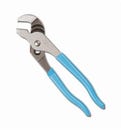 Channellock® 426 Tongue and Groove Plier, 7/8 in Nominal, 3/4 in L C1080 High Carbon Steel Straight Jaw, 6-1/2 in OAL
Channellock® 426 Tongue and Groove Plier, 7/8 in Nominal, 3/4 in L C1080 High Carbon Steel Straight Jaw, 6-1/2 in OAL
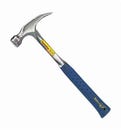 Estwing® E324S Framing Hammer, 16 in OAL, Smooth Surface, 24 oz Steel Head, Straight Claw, Steel Handle
Estwing® E324S Framing Hammer, 16 in OAL, Smooth Surface, 24 oz Steel Head, Straight Claw, Steel Handle
 Mayhew™ 62065 X-Long Pin Punch Kit, Hex Shank, 9-1/2 in OAL, 5 Pcs
Mayhew™ 62065 X-Long Pin Punch Kit, Hex Shank, 9-1/2 in OAL, 5 Pcs
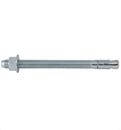 DeWALT® Power-Stud®+ Powers® 7449SD1-PWR Expansion Wedge Anchor, 3/4 in dia, 10 in OAL, 7-1/2 in L Thread, Carbon Steel, Zinc Plated
DeWALT® Power-Stud®+ Powers® 7449SD1-PWR Expansion Wedge Anchor, 3/4 in dia, 10 in OAL, 7-1/2 in L Thread, Carbon Steel, Zinc Plated
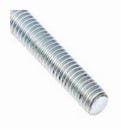 BBI® 777037 All Threaded Rod, 3/8-16, 12 ft OAL, Steel Alloy
BBI® 777037 All Threaded Rod, 3/8-16, 12 ft OAL, Steel Alloy
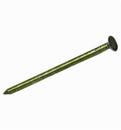 Primesource® 8CTDSKR Sinker Nail, 17/64 in, 2-3/8 in L, 9 ga, Vinyl Coated, Smooth Shank
Primesource® 8CTDSKR Sinker Nail, 17/64 in, 2-3/8 in L, 9 ga, Vinyl Coated, Smooth Shank
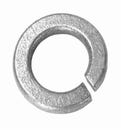 BBI® 754072 Medium Split Lock Washer, 1/2 in Nominal, 18-8 SS
BBI® 754072 Medium Split Lock Washer, 1/2 in Nominal, 18-8 SS

